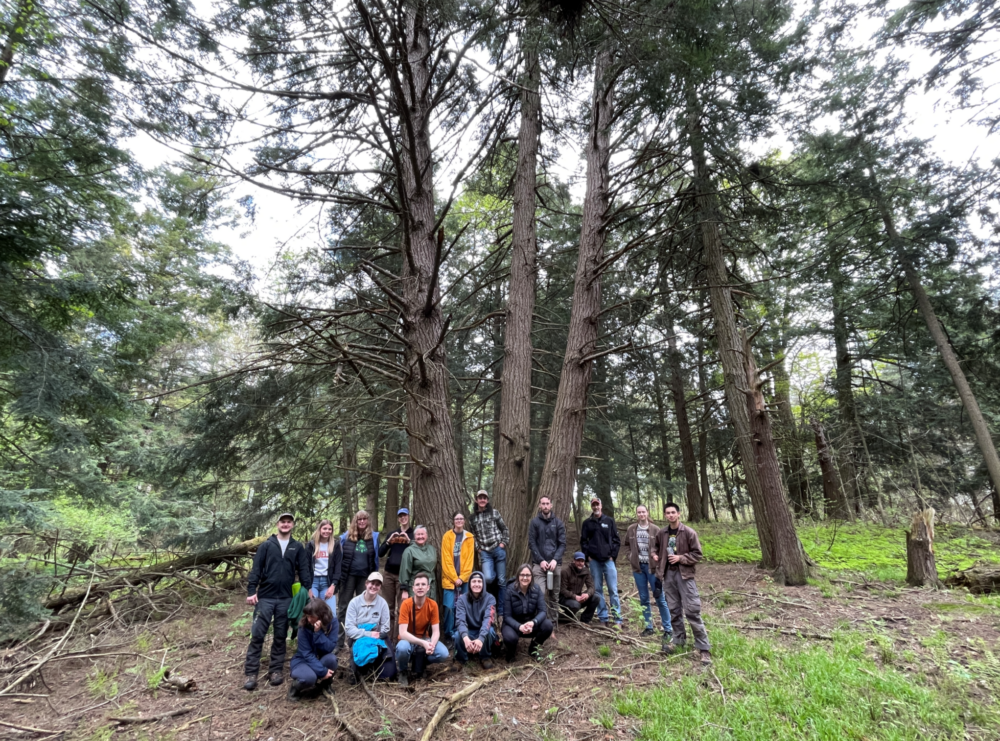A beloved community and research landmark, the University of Guelph’s Arboretum is the 2024 recipient of Ontario Nature‘s Natural History Award.
The award honours individuals and groups that have made a significant impact toward protecting nature in Ontario and promoting conservation biology.

The Arboretum has been an internationally renowned site of this work for more than 50 years, offering free admission and extensive community programming, with a mission to serve as an outdoor learning resource for campus and the community.
Arboretum Director Justine Richardson accepted the honour at the Ontario Nature’s Conservation Awards on June 1 at the Evergreen Resort in the Saugeen Bruce Peninsula.
“The Arboretum has grown in 50 years to become an essential green space,” says Richardson. “As we look at the urgencies of climate change, biodiversity loss, our obligation to Indigenous communities and the mental and physical well-being and connection to nature for our people, I believe the Arboretum has a role to play in today’s major issues.”
The Arboretum was nominated by Nature Guelph, a local charity focused on environmental education and community conservation initiatives.
“There are many organizations in Ontario with broadly similar goals of engaging the public with nature, but the Arboretum stands out for the variety, depth and reach of its activities,” the organization said in its nomination.
‘Generations of decision-makers’ support Arboretum’s conservation efforts

The Edna and Frank C. Miller English Garden
Historically rooted in the 1880s, when the Ontario Agricultural College began its studies on woody plants, the Arboretum was officially established in 1970 as a “living laboratory” for research, education, outreach and conserving biodiversity for future generations.
Today, it encompasses 400 acres rich in biodiversity and is one of the most visited parts of campus, with 100,000 annual visitors enjoying its plant collections, walking trails, gardens, natural woodlands, wetlands and meadows. The forested areas include some of the oldest and most unique heritage forests in the city of Guelph.
Since the late 1970s, Arboretum staff have worked with landowners to document the status of rare woody plant species in Ontario to advise on preservation. Today, more than 30 species of threatened or endangered woody plants are archived in the Arboretum’s grounds and gene banks. These gene banks take pressure off wild populations and support the plants’ ability to naturally regenerate.
For instance, the Elm Recovery Project, which began at the Arboretum in 1998, has had a significant impact by identifying and testing a biodiverse set of American elm trees for tolerance to Dutch Elm disease. Now entering its second generation of tested elms, the project represents the long-term commitment that tree research requires and aims to reintroduce biodiverse populations of disease-tolerant trees to the Ontario landscape.
The Arboretum’s most recent addition to its gene banks is red mulberry trees. As only 200 to 300 red mulberry understory trees are left in the province, the Arboretum is working with landowners and organizational partners to test and propagate them. This will establish a long-term seed orchard and contribute to species recovery.
Similarly, the Arboretum’s seed collection program protects rare and threatened seeds and plants and is used in international conservation efforts. The overall collection now numbers over 1,700 taxa of woody plants.
Arboretum inspires community to preserve natural environments

The Arboretum’s demonstration gardens, including the Japanese, English and Italian Gardens, showcase artistic and cultural diversity while informing visitors of different plantings that provide food, cover and shelter for wildlife.
Richardson adds the Arboretum is a critical location to support the mental health of students during stressful times during the semester and also serves as a site of experiential learning.
A number of citizen science projects track and observe wildlife species. This contributes to scientific research data and also connects students with the community in educational training programs.
Other initiatives include the Arboretum’s annual “Arb Expo & Plant Sale,” which brings the community together to showcase horticulture and nature to over a thousand visitors. For over 30 years, this has provided native, locally sourced plants to the public, and offers a family-friendly forum to make connections, tour the university facilities and take home a plant for one’s own garden.
“Generations of decision-makers have supported the space,” says Richardson. “My hope is that the Arboretum continues to grow and to provide a healthy space for the trees and wildlife and the people who access it.”
She adds: “Thank you to Ontario Nature, Nature Guelph and to the many people who have made and still make this place so special, including our passionate staff who are so knowledgeable, our dedicated volunteers, donors and community supporters, as well as the faculty, staff and students who use the Arboretum for teaching and research every day.”
